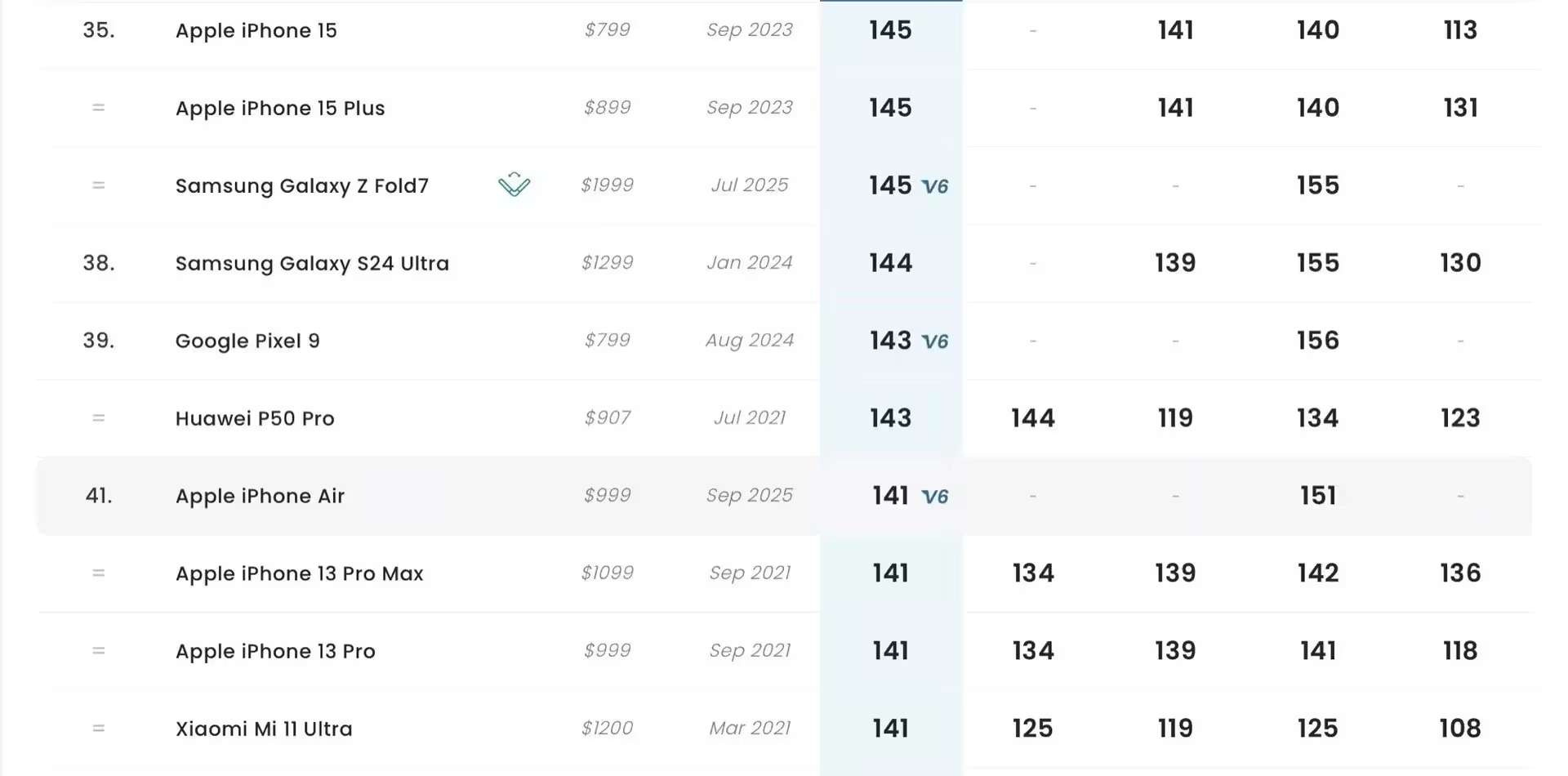3 Minutes
DxOMark's latest camera ranking puts Apple's new iPhone Air below flagship rivals like the iPhone 15 and Google Pixel 8. Despite a premium price and a strikingly thin body, the phone's single rear camera design cost it points in a crowded camera leaderboard.
Why DxOMark knocked the iPhone Air down the list
The iPhone Air ships with a lone 48MP main sensor (1/1.56-inch) and an f/1.6 lens — no ultra-wide, no telephoto. Apple prioritized an ultra-thin chassis (just 5.6 mm) over multi-lens versatility, and DxOMark's analysis shows that missing dedicated cameras are hard to fully compensate for in software. The result: a score of 141 and a ranking around 41, placing it behind the Pixel 8, iPhone 15, and Xiaomi 15.
DxOMark's notes highlight practical camera weaknesses: occasional slow autofocus, underexposed results in high-contrast scenes, detail loss in some portrait shots, and white balance or exposure inconsistencies in video. Those issues, combined with the lack of optical zoom and dedicated ultra-wide captures, produced the largest hit to the overall score.
Where the iPhone Air still shines
Not everything about the camera is a drawback. In many everyday shooting conditions the main sensor delivers accurate exposure, faithful color reproduction, broad dynamic range, and an effective night mode. Portrait processing generally separates subject from background well, and the phone nails skin tones in most cases.

- Video stabilization: notably strong — a clear plus for vloggers and casual videographers.
- Daytime image quality: reliable colors and dynamic range in most scenes.
- Night mode: efficient and usable in low light.
Design trade-offs: ultra-thin body vs. camera capability
Apple's push to keep the iPhone Air extremely thin required sacrifices. By removing the ultra-wide and telephoto modules, the phone misses hardware-driven features like optical zoom and dedicated wide-angle framing. That trade-off is especially visible when you compare it to devices such as the Motorola Edge 70, which manages three rear cameras inside a 5.99 mm body — a reminder that extreme thinness doesn't always mean fewer cameras are inevitable.
Real-world implications
For users who prioritize a sleek, lightweight phone and best-in-class video stabilization, the iPhone Air remains appealing. But if you want flexible shooting — optical zoom, true ultra-wide composition, or the most consistent portrait detail — rivals with multi-lens arrays deliver a more complete camera experience.
Is the iPhone Air still worth buying?
It depends on what you value. The iPhone Air combines an attractive design and strong core camera performance with a few notable shortcomings that show up in lab tests and tougher shooting scenarios. If video stability, slim design, and solid day-to-day photos matter most, it's a compelling option. If you expect flagship-level camera versatility across all modes, consider phones that retain multiple dedicated rear lenses.
Ultimately, DxOMark's ranking reflects the balance Apple chose: a premium, minimalist device that trades hardware versatility for an ultra-slim profile and dependable main-camera performance.


Leave a Comment